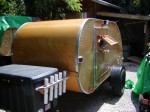light switch
16 posts
• Page 1 of 2 • 1, 2
light switch
Any reason why a standard house light switch won't work with 12V inside my tear? They're cheap, reliable, and abundant.
The RoadCamper the old teardrop
-

Scooter - 500 Club
- Posts: 687
- Images: 69
- Joined: Sun Jun 13, 2004 3:56 pm
- Location: AZ
I don't see why not. I used them in mine since I have 12 vdc and 120vac in my trailer. It was more of an cosmetic thing for me. Other than their size difference (Bigger) they work fine for the application.
Woody
The Tear Jerker's, Florida Chapter Director
E-mail: [email protected]
Tear jerker chapter site http://www.tearjerkers.net/forums/
Check the SE section for gathering information
Tear Jerkers new site http://www.tearjerkers.net/forums/
Enjoying life in 12 ounce increments is what it's about
The Tear Jerker's, Florida Chapter Director
E-mail: [email protected]
Tear jerker chapter site http://www.tearjerkers.net/forums/
Check the SE section for gathering information
Tear Jerkers new site http://www.tearjerkers.net/forums/
Enjoying life in 12 ounce increments is what it's about
-

Woody - 2000 Club

- Posts: 2006
- Images: 26
- Joined: Tue Jun 15, 2004 11:07 pm
- Location: Ft. Lauderdale, Florida




